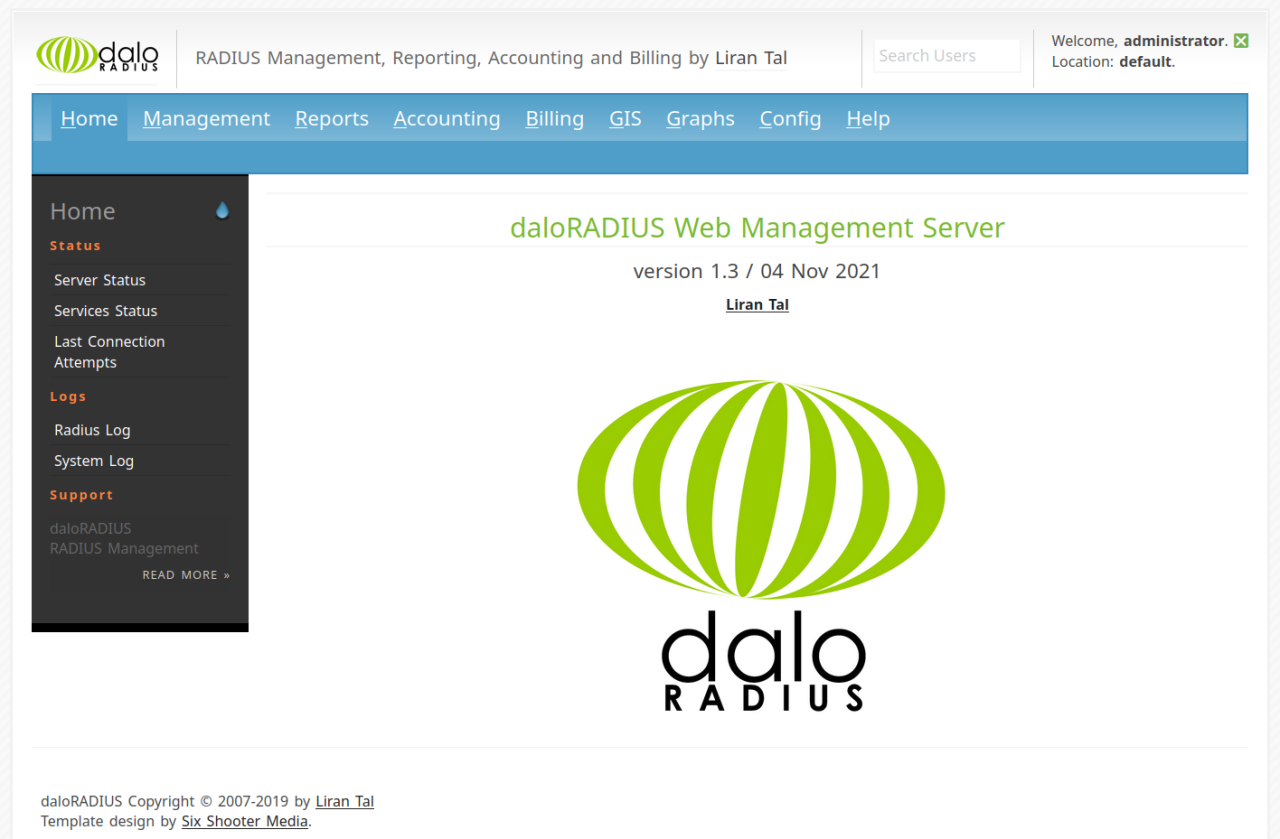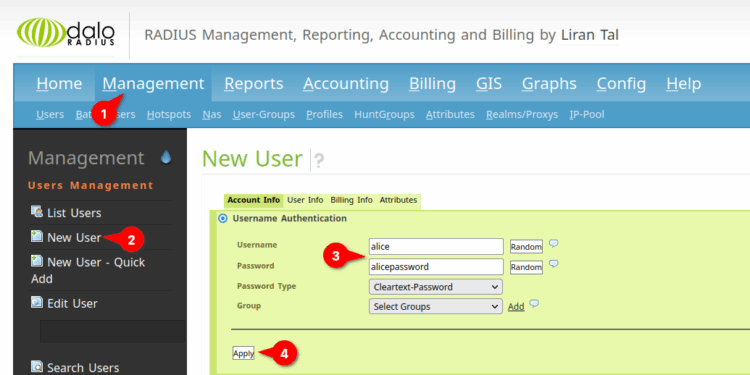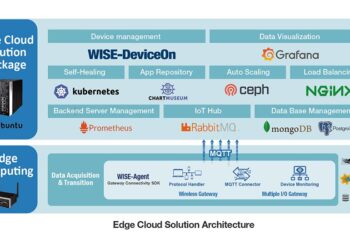Embark on a journey into the realm of Step-by-Step DaloRADIUS Setup for Scalable User Management and Billing, where intricate details blend seamlessly with practical insights to offer a truly enriching reading experience.
Delve deeper into the nuances of this topic in the following paragraphs, exploring the intricacies of user management, billing, scalability, and security with finesse.
Understanding DaloRADIUS

DaloRADIUS is an open-source web platform that provides centralized management for user authentication, authorization, and accounting (AAA) in a network environment. It plays a crucial role in managing user access, controlling bandwidth usage, and handling billing processes efficiently.When it comes to scalable user management, DaloRADIUS offers several benefits.
Firstly, it allows network administrators to easily add, modify, or delete user accounts from a centralized interface, saving time and effort. Secondly, DaloRADIUS supports various authentication methods, such as RADIUS, LDAP, and MySQL, making it flexible for different network setups.
Lastly, the platform provides detailed reporting and monitoring tools, enabling administrators to track user activities and analyze usage patterns effectively.
Comparison with Other Tools
- DaloRADIUS vs. FreeRADIUS: While FreeRADIUS is a popular open-source RADIUS server, DaloRADIUS offers a user-friendly web interface for managing FreeRADIUS configurations, making it more accessible to users with varying levels of technical expertise.
- DaloRADIUS vs. Cisco ISE: Cisco Identity Services Engine (ISE) is a comprehensive network access control solution, but DaloRADIUS focuses specifically on user management and billing, providing a more streamlined approach for those specific tasks.
- DaloRADIUS vs. PacketFence: PacketFence is another open-source network access control solution, but DaloRADIUS offers a simpler and more focused solution for user management and billing without the complexity of additional features.
Setting up DaloRADIUS
Setting up DaloRADIUS on a server is a crucial step towards efficient user management and billing. Below is a step-by-step guide to help you install DaloRADIUS successfully.
System Requirements
- Operating System: DaloRADIUS is compatible with Linux distributions, such as Ubuntu, CentOS, and Debian.
- Web Server: Apache or Nginx web server is required to host DaloRADIUS.
- Database Server: MySQL or MariaDB to store user data and configurations.
- PHP: Ensure PHP version 5.6 or higher is installed on the server.
- FreeRADIUS: DaloRADIUS works in conjunction with FreeRADIUS for authentication and accounting.
Pre-Configuration Steps
Before starting the installation process, there are a few pre-configuration steps that need to be taken care of:
- Update the system: Make sure your server's operating system is up to date by running the necessary updates.
- Install required dependencies: Install Apache, MySQL, PHP, and FreeRADIUS on your server.
- Create a MySQL database: Set up a MySQL database and user for DaloRADIUS to store data.
- Configure FreeRADIUS: Set up FreeRADIUS with the necessary configurations for integration with DaloRADIUS.
Configuring User Management

Managing users within DaloRADIUS is crucial for efficient network administration. This involves adding users, assigning access levels, and organizing them effectively for streamlined management.
Adding and Managing Users
- Create a new user by navigating to the Users tab in DaloRADIUS and selecting the option to add a new user.
- Fill in the required information such as username, password, email address, and any other relevant details.
- Save the user profile to add them to the system.
- Manage existing users by editing their profiles to update information or deactivate users when necessary.
Assigning Access Levels and Permissions
- Define different access levels based on job roles or responsibilities within your organization.
- Assign appropriate permissions to each user to control their access to specific network resources.
- Regularly review and update access levels to ensure security and compliance with organizational policies.
Organizing Users for Efficient Management
- Create user groups to categorize users based on departments, teams, or functions.
- Utilize tags or labels to further classify users and streamline the management process.
- Implement a naming convention for user profiles to easily identify and locate users within DaloRADIUS.
Implementing Billing Features
Implementing billing features in DaloRADIUS is essential for managing user payments and ensuring the sustainability of your network. In this section, we will explore the billing functionalities available in DaloRADIUS and provide a step-by-step guide on setting up billing plans, rates, generating billing reports, and tracking user payments within the system.
Setting up Billing Plans and Rates
To set up billing plans and rates in DaloRADIUS, follow these steps:
- Create a new billing plan by defining the plan name, description, billing cycle, and any included services.
- Set the billing rates for the plan based on factors such as data usage, time duration, or a flat rate.
- Assign the billing plan to specific user groups or individual users to apply the rates accordingly.
Properly configuring billing plans and rates ensures that users are accurately billed for their usage, leading to fair and transparent billing practices.
Generating Billing Reports
In DaloRADIUS, you can easily generate billing reports to track user payments and monitor revenue flow. Here's how you can do it:
- Access the billing reports section in DaloRADIUS dashboard.
- Select the desired time period for the report, such as daily, weekly, monthly, or custom range.
- View detailed reports on user payments, outstanding balances, revenue generated, and other financial metrics.
Tracking User Payments
Tracking user payments within DaloRADIUS is crucial for maintaining financial stability. Follow these steps to track user payments effectively:
- Set up payment reminders and notifications to alert users about upcoming dues.
- Monitor payment status for each user and send notifications for overdue payments.
- Automate payment processing for seamless transactions and efficient revenue collection.
Ensuring Scalability and Security
When it comes to scaling DaloRADIUS for a growing user base, there are several tips to keep in mind to ensure smooth operations and performance. Additionally, implementing security measures is crucial to protect user data within DaloRADIUS and maintain the integrity of the system.
Scaling DaloRADIUS for Growth
- Optimize database performance by regularly cleaning up old data and indexing tables for faster queries.
- Implement caching mechanisms to reduce the load on the server and improve response times for user requests.
- Consider deploying DaloRADIUS on a cloud-based infrastructure to easily scale resources based on demand.
- Monitor system performance and user activity to identify bottlenecks and address them proactively.
Enhancing Security Measures
- Enable secure communication protocols such as HTTPS to encrypt data transmission between users and the DaloRADIUS server.
- Implement role-based access control to restrict user privileges and ensure that sensitive data is only accessible to authorized personnel.
- Regularly update DaloRADIUS and its dependencies to patch known security vulnerabilities and protect against potential threats.
- Enable logging and monitoring features to track user activity and detect any unauthorized access or suspicious behavior.
Integrating Additional Security Features
- Consider implementing two-factor authentication to add an extra layer of security and verify user identities more effectively.
- Utilize IP whitelisting/blacklisting to control access to the DaloRADIUS system based on trusted or blocked IP addresses.
- Integrate intrusion detection systems to actively monitor network traffic and detect potential security breaches in real-time.
- Implement data encryption at rest to protect stored user data from unauthorized access or theft.
Epilogue

As we come to the close of this discourse on Step-by-Step DaloRADIUS Setup for Scalable User Management and Billing, reflect on the key takeaways and insights shared, paving the way for a more informed approach to user management and billing.











